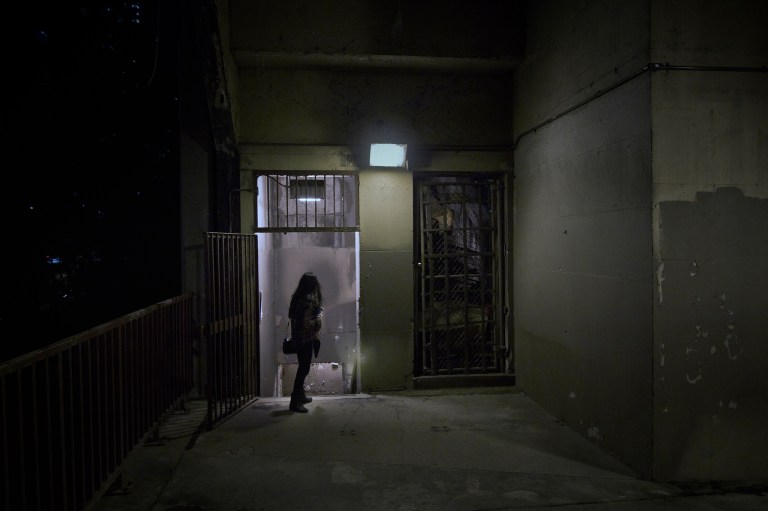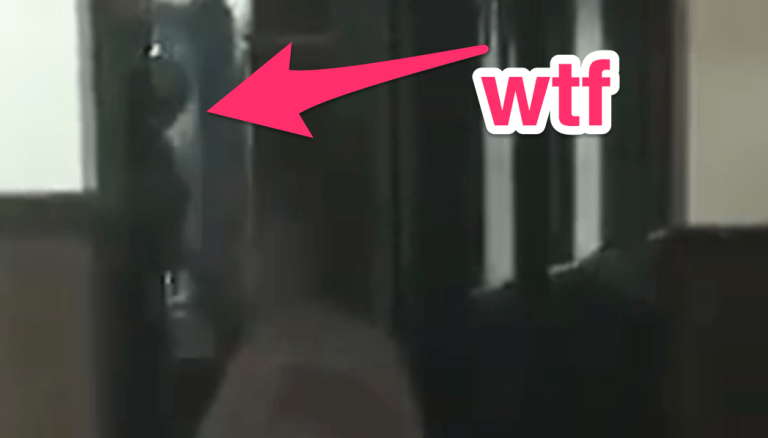
19 Facts About Cicada 3301, A Mysterious Internet Puzzle
Cicada 3001 has been called “the most elaborate and mysterious puzzle of the internet age.” The Washington Post ranked it as one of the “top 5 eeriest, unsolved mysteries of the internet.” Six years after the elaborate cryptographic puzzle contest first launched, it still seems that no one except the person(s) who started it know(s)…
Cicada 3001 has been called “the most elaborate and mysterious puzzle of the internet age.” The Washington Post ranked it as one of the “top 5 eeriest, unsolved mysteries of the internet.” Six years after the elaborate cryptographic puzzle contest first launched, it still seems that no one except the person(s) who started it know(s) what it even meant—if it meant anything at all.
The Facts As We Know Them About Cicada 3001
1. The first Cicada 3301 puzzle contest appeared on January 4, 2012, and was ended after one month.
2. Subsequent Cicada 3301 puzzles appeared on January 5, 2013 and January 5, 2014. According to Cicada 3301’s official PGP key, all subsequent alleged puzzles were hoaxes that were not endorsed by the organization.
3. The 2012 “puzzle” was merely a black image with white type. The text read as follows:
Hello. We are looking for highly intelligent individuals. To find them, we have devised a test.
There is a message hidden in this image.
Find it, and it will lead you on the road to us. We look forward to meeting the few that will make it all the way through.
Good luck.
3301
4. It wasn’t until someone opened the image in the text-only editor WordPad that they realized that there was an embedded “Caesar cipher” near the bottom:
TIBERIVS CLAVDIVS CAESAR says “lxxt>33m2mqkyv2gsq3q=w]O2ntk”
5. That garbled message was presumed to be an encryption technique. Someone realized that Tiberius had been the fourth Roman Emperor, so they moved each letter four positions back to reveal an URL.
6. However, clicking that URL lead to a photo of a rubber duck with the following message:
WOOPS just decoys this way. Looks like you can’t guess how to get the message out.
6. Someone surmised that the use of the words “out” and “guess” suggested that the duck image should be run through another text editor named OutGuess. Sure enough, running the image through OutGuess revealed yet another URL.
7. That link led to a subreddit containing Mayan numerals, a mishmash of letters, and two images that were labeled “WELCOME” and “PROBLEMS.” Other clues involved book codes, King Arthur, and the Holy Grail.
8. These clues finally led to a phone number. Those who dialed the phone number received the following message:
Very good. You have done well. There are three prime numbers associated with the original final .jpg image. 3301 is one of them. You will have to find the other two. Multiply all three of these numbers together and add a .com on the end to find the next step. Good luck. Good-bye.
9. Multiplying the pixel dimensions of the first new image on the page yielded yet another URL—one that led to a picture of a cicada on the screen and a countdown that had been set to expire in three days. The new URL also included this message:
You have done well to come this far. Patience is a virtue. Check back at 17:00 on Monday, 9 January 2012. UTC.
10. At the end of the three-day countdown, the website reloaded to reveal fourteen GPS coordinates across the world in the following locations: Warsaw, Seoul, Paris, Sydney, Hawaii, Miami, New Orleans, and Seattle.
11. During the course of the next week, participants visited the GPS coordinates and in each instance found the same thing: sheets of white paper taped to a streetlight, each one featuring a stenciled image of a cicada and a QR code.
12. The QR codes linked to new URLs which featured lines from the William Gibson poem “Agrippa (A Book of the Dead).” Cryptologists were able to extract a new code—this one a new URL with a “.onion” domain name which must be viewed by the untraceable TOR browser.
13. The Tor link instructed users to open a Hotmail account where they would be sent a new message. The new message was yet another jumble of puzzles and encoded messages.
14. After a month of conducting this insanely complicated worldwide scavenger hunt, the creator(s) of Cicada 3301 left the following message on 4Chan:
We have now found the individuals we sought. Thus our month-long journey ends. You are undoubtedly wondering what it is that we do we are much like a * think tank * in that our primary focus is on researching and developing techniques to aid the ideas we advocate liberty privacy security.
15. That message led to speculation that Cicada 3301 was simply an elaborate recruiting scheme by either a mega-corporation or the CIA to find the brightest minds in decoding. However, no one has come forward to announce being hired by Cicada 3301 as a result.
16. Subsequent Cicada puzzles have led to speculation that the group is part of an esoteric cult. A book called Liber Primus was revealed to be “the sacred book of Cicadianism.” Passage from Liber Primus include:
A Cicadian is someone who has chosen to give up the superficial and unfulfilling world around them to follow the path of the Cicada, and emerge into enlightenment….
Enlightenment to a Cicadian is a state in which we are wholly optimized and present as a portion of the Global Consciousness. To be in this state, we must exercise our minds, our Will, our bodies, and our intelligence.
This doesn’t mean to give ourselves over to something else. Instead it is to become one with our true nature: as a part of the Global Brain.
In the Liber Primus, 3301 left us four sets of instructions (possibly more that have yet to be discovered). Over time, we will provide an analysis of these instructions and the far-reaching implications therein:
Command your own self.
Do four unreasonable things each day.
Program your mind.
Program reality.
Question all things.
Discover truth inside yourself.
Follow your truth.
Impose nothing on others.
17. Cicada 3301 has left clues to its mysteries in the following locations:
- Annapolis, Maryland, US
- Chino, California, US
- Columbus, Georgia, US
- Dallas, Texas, US
- Erskineville, Australia
- Fayetteville, Arkansas, US
- Flushing, New York, US
- Granada, Spain
- Greenville, Texas, US
- Haleiwa, Hawaii, US
- Little Rock, Arkansas, US
- Los Angeles, California, US
- Miami, Florida, US
- Moscow, Russia
- New Orleans, Louisiana, US
- Okinawa, Japan
- Paris, France
- Portland, Oregon, US
- Seattle, Washington, US
- Lincoln, Nebraska, US
- Seoul, South Korea
- Warsaw, Poland
- Mexico City, Mexico
- Sydney, Australia
18. Classic texts referenced in the string of Cicada 3301 clues include:
- “Agrippa (A Book of the Dead),” a poem by William Gibson
- “The Ancient of Days,” a design by William Blake
- Anglo-Saxon Rune alphabet
- Johann Sebastian Bach
- Cuneiform
- M. C. Escher
- Francisco Goya
- Gödel, Escher, Bach, a book by Douglas Hofstadter
- Zen Kōans
- Liber AL vel Legis by Aleister Crowley
- The Lady of Shalott, a painting by John William Waterhouse
- The Mabinogion, a series of pre-Christian Welsh manuscripts
- Mayan Numerology
- The Marriage of Heaven and Hell, a book by William Blake
- Nebuchadnezzar, a design by William Blake
- Newton, a design by William Blake
- Self-Reliance by Ralph Waldo Emerson
- Song of Liberty, a poem by William Blake
19. Despite the massive publicity it received and the armies of hackers and cryptographers it sent seeking out its clues, Cicada 3301’s greatest achievement is that more than six years after its launch, only its creator(s) seem(s) to have an idea what any of it means.
Frequently Asked Questions About Cicada 3301
What is the cicada image and where did it come from?
According to Uncovering Cicada Wiki, it’s nothing more than a “dead cicada in a scanner” that has been enhanced using Photoshop’s “emboss” filter.
According to researchers at Cicada Mania:
The logo appears to be a photo of a cicada processed with an emboss filter. (I’ve seen other versions of the logo, which look like the embossed logo run through an ASCII filter that makes it look like the green alphanums on a black background like the Matrix or the Homebrew setting for Terminal windows on the Mac.)
The interesting thing about the 3301 logo is that the cicada appears to be a collage. The veins of the right hind wing are different than the left hind wing. Either the wing was taken from a different species, or the lines that appear in the anal lobe were cloned/copied to cover the entire hindwing.
What is steganography?
According to Wikipedia, steganography “is the practice of concealing a file, message, image, or video within another file, message, image, or video. The word steganography comes from New Latin steganographia, which combines the Greek words steganós (στεγανός), meaning “covered or concealed”, and -graphia (γραφή) meaning “writing.”
What are Medieval Welsh manuscripts?
They are simply the written historical records from Wales from between the 5th and 15th centuries. They are relevant to Cicada 3301 because one of the clues was a poem called “The Lady of the Fountain” from a medieval Welsh manuscript called the Mabinogion.
Who are code-breakers?
Whereas a cryptographer is someone who creates secret codes, a code-breaker, AKA a cryptanalyst, is someone who makes a practice of decoding secret messages without any prior knowledge of the code key. Since Cicada 3301 launched, code-breakers have been working tirelessly to untangle this absurdly complicated code.
Is there any evidence of Cicada 3301 being created by a secret society?
Although there are plenty of rumors about a secret society being behind Cicada 3301 based on the idea that they were seeking “highly intelligent individuals” for their organization, there is no evidence. Years ago, Chilean authorities accused Cicada 3301 of being a “hacker group” that was involved in illegal activities. Others have claimed it’s a cult or religion.
What is cryptography?
The word “cryptography” is derived from the Greek kryptos, meaning “hidden,” and graphein, meaning “to write.” It refers to both the practice of hiding messages within plain sight and the art of decoding those messages.
What is the Runic Alphabet?
Runes are the letters in a series of closely related Germanic alphabets that originated around 150 AD and existed in Northern Europe before that area adopted the Latin alphabet as a result of Christianization.
What is the Liber Primus book?
“Liber Primus” means “First Book” in Latin. Here is the entire Liber Primus book, a 58-page book mysteriously released in 2015 which is almost entirely written in the Runic alphabet. And here is a translation of the book, which reveals passages such as:
BELIEVE NOTHING FROM THIS BOOK
EXCEPT WHAT YOU KNOW TO BE TRUE
TEST THE KNOWLEDGE
FIND YOUR TRUTH
EXPERIENCE YOUR DEATH
DO NOT EDIT OR CHANGE THIS BOOK
OR THE MESSAGE CONTAINED WITHIN
EITHER THE WORDS OR THEIR NUMBERS
FOR ALL IS SACRED
and
AMASS GREAT WEALTH
NEVER BECOME ATTACHED TO WHAT YOU OWN
BE PREPARED TO DESTROY ALL THAT YOU OWN
According to one skeptic, the Liber Primus “was just a thing to hide the actual clues in during the last round of puzzles…but the text of it is largely irrelevant bullshit that people who can’t actually work on the solving have latched on to in lieu of any actual 2015 puzzle…”
What are Mayan numbers?
The Mayan numeral system was a mathematical system that represented numbers and calendar dates in Mayan civilization. It is visually represented as a series of dots and dashes. Whereas the Hindu-Arabic numeral system that most of us currently use is based on powers of ten, the Mayan system is based on powers of twenty. Mayan numbers were used as part of the mysterious serious of clues that the propagators of Cicada 3301 left for sleuths.
What do prime numbers have to do with the Cicada 3301 puzzle?
Decoding one string of Mayan numbers led investigators to arrive at a phone number that, when called, led to this voicemail message:
Very good. You have done well. There are three prime numbers associated with the original final.jpg image. 3301 is one of them. You will have to find the other two. Multiply all three of these numbers together and add a .com to find the next step. Good luck. Goodbye.
It turns out that the other two prime numbers associated with the original Cicada image were 509 and 503, the image’s width and weight in pixels, respectively. When mutliplying 509 x 503 x 3301, investigators arrived at 845145127, which, when added with a “.com” at the end, led to another website and another image, which when decoded read:
Patience is a virtue.
Check back at 17:00 on Monday, 9 January 2012 UTC.
3301
This led to another series of codes which led to a GPS coordinate in the real world that contained yet another code attached to a piece of paper.
Has anyone solved the cicada puzzle?
Joel Eriksson is a Swedish cryptosecurity researcher who claims to be one of the only people to have cracked the Cicada 3301 puzzle. Although he didn’t crack the code in time to be allowed past the “last door,” he speculates about who’s behind the code:
It is most likely an underground organization, not related to any government or intelligence agency. Based on the references in their challenges–the Agrippa poem by William Gibson, The Marriage of Heaven and Hell by William Blake, The Book of The Law by Aleister Crowley–and their constant references to prime numbers and the like, they are likely intellectual, anti-establishment, ideologically driven and they seem to be valuing logical/analytical thinking highly. They seem to share a lot of ideology with the cryptoanarchy movement, and old-school hackers.
The only other person known to have solved the puzzle was a teenage computer expdert named Marcus Wanner. According to one source:
Marcus solved the puzzle along with a group of sleuths and stated that each of them received individual messages with tougher puzzles to solve. Wanner also said that they were asked to provide their opinions on freedom of information, online privacy, and censorship. According to Wanner, the people who answered satisfactorily at this stage were invited for a private meeting. They were given further technical work which Wanner was unable to complete.











